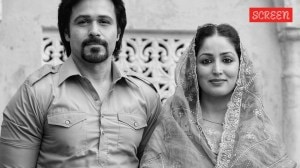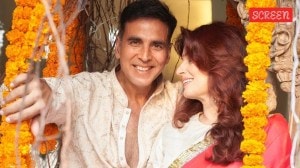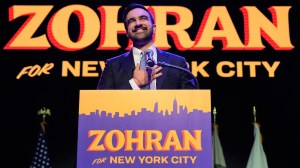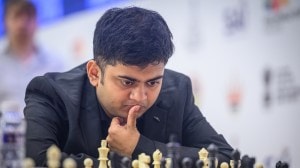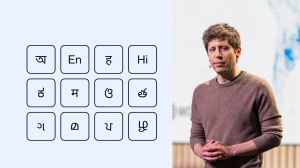Hurriyat: A crowded house, a divided house
Though the All Parties Hurriyat Conference (APHC) was formed on July 31, 1993, its essential idea predates 1989, when the first sounds of gu...

Though the All Parties Hurriyat Conference (APHC) was formed on July 31, 1993, its essential idea predates 1989, when the first sounds of guns began to be heard in Kashmir. This disparate conglomerate which claims to represent the wishes and will of the Kashmiri people is a mixed bag of ideologies and personalities. Not surprisingly, then, contradictions and infighting have dogged the Hurriyat and have often slipped out from behind closed doors.
In its earlier avatar, the Hurriyat was a political front called the ten-member Tehreeki Hurriyat Kashmir (THK), headed by advocate Mian Qayoom. At the time, its members included the Jamat-e-Islami, Jammu and Kashmir Liberation Front (JKLF), Muslim Conference, Islamic Student’s League, Mahaz-e-Azadi, Muslim Khataween Markaz, Bar Association, Itehadul Muslimeen, Dukhtaran-e-Milat and Jamiat-e-Ahlihadees:
* The JKLF, whose founder Maqbool Bhat who was hanged in Tihar Jail on charges of killing a Indian Embassy official in London on February 11, 1984, represented youth disgruntled with India, especially with the National Conference.
* The Islamic Students League headed by Shakeel Bakshi, a religious organisation, deemed Kashmir’s accession to India as forced and ‘‘un-Islamic’’. Its cadres, generally radical youth, have always demanded Kashmir’s accession to Pakistan.
* Mahaz-e-Azadi, led by Inayatullah Anrabi, Kashmir should accede to Pakistan on the basis of religion, geography and emotions.
* Muslim Conference, led by the present Hurriyat chairman, Abdul Gani Bhat, also wants Kashmir’s accession to Pakistan.
One front closes, another opens
The THK dithered along and was unable to exert too much influence until 1992, when Mirwaiz Moulvi Umar Farooq, chairman of the J&K Awami Action Committee (J&KAAC), called a meeting of religious, social and political organisations at Mirwaiz Manzil on December 27, 1992. The upshot of this meeting: In July 1993, the APHC was born.
The APHC’s executive council consists of seven members from seven executive parties. They are: Syed Ali Shah Geelani of Jamat-e-Islami, Umar Farooq of Awami Action Committee, Sheikh Abdul Aziz of Peoples League, Moulvi Abass Ansari of Itehad-ul-Muslimeen, Prof Abdul Gani Bhat of Muslim Conference, Yasin Malik of the JKLF and Abdul Gani Lone of Peoples Conference, who was assassinated on Tuesday. Apart from the executive council, the Hurriyat working committee comprises 21 members. This include two members each from the seven parties besides one member who represents the party in the executive council.
The General Council has more than 23 parties as members including traders, employee unions and social organisations. While the membership of the executive council cannot be increased as per the APHC constitution, the general council can accommodate more members if it needs to. The Hurriyat also enjoys an observer’s status in the Organisation of Islamic Countries.
Hurriyat Executive: The Big Five
|
Abdul Gani Bhat
|
Abdul Gani Bhat, Hurriyat chairperson
It’s another one of those contradicions that Kashmir’s politics is capable of throwing up: Hurriyat chairman Prof Abdul Gani Bhat’s brother was killed by the pro-Pakistani Hizbul Mujaheddin; yet Bhat is staunchly pro-Pakistan, and supports Kashmir’s accession to Pakistan.
Perceived as an honest and simple leader — Bhat’s son works as a driver for the Hurriyat — Bhat heads the Jammu and Kashmir Muslim Front Conference. His party had led the movement in Kashmir against Dogra rule before the National Conference was carved out of it in 1938.
Born in the northern Kashmir village of Botengo, 10 kms from Sopore, Bhat studied Persian, economics and political science at Sri Pratap College in Srinagar, and then migrated to Aligarh Muslim University to pursue his post graduation in Persian and a law degree. He joined the bar in Sopore on his return, but then switched to teaching Persian at the Government College in Poonch. In February 1986, Bhat was dismissed from service for ‘‘constituting a threat to the security of state’’ — his Persian lectures were often peppered with politics. He formed the Muslim United Front in 1986. It’s believed the MUF’s defeat in 1987 was the trigger for militancy.
|
Syed Ali Shah Geelani
|
Syed Ali Shah Geelani
His is the loudest anti-establishment and anti-Indian voice in the conference. Also, the only leader whose stand on militancy and talks has remained unmoved by upheavals in the Valley. This rightwing Jamat-e-Islami leader and teacher from Sopore has participated in elections and was elected to the State Legislative Assembly thrice. Geelani has also clocked more than 10 years in prison — he was first arrested as a 30-year-old on August 28, 1962. Geelani has never accepted that accession of Kashmir by Maharaja Hari Singh, with the Union of India was final, and wants the implementation of UN resolutions on the issue.
Geelani’s acclaimed oratory has been instrumental in wooing youth to take up guns for a ‘‘jihad’’ against the ‘‘continued occupation of Kashmir by India’’. He remains the only separatist Hurriyat leader who still publicly pitches for militancy and opposes any peace initiative which doesn’t sketch in Pakistan.
|
Mirwaiz Umar Farooq
|
Mirwaiz Umar Farooq
Kashmir’s head priest has a great deal of weight on his young shoulders. The head preacher of Jamia Masjid Srinagar, Umar was anointed as head of the Awami Action Committee (AAC), a constituent of Hurriyat, at just 17, after the assassination of his father, Moulvi Mohammad Farooq, in May 1991. Considered a moderate, Umar favours resolution of the Kashmir issue through peaceful negotiations. Though he has never denounced the armed struggle, he maintains a safe distance from militant groups. Umar, who enjoys tremendous support in downtown Srinagar, is the only Hurriyat leader who accepts the restoration of autonomy as a step towards resolution of the Kashmir issue. Though the AAC was once considered as being pro-Pakistan, Umar has preferred to remain non-committal on whether he supports accession to Pakistan or prefers independence.
Moulana Abbas Ansari
This 65-year-old Shia leader represents the Itehadul Muslimeen. Since then he has been enjoying veto status in the Hyrriyat executive. His political career spans over five decades, and he’s regarded as being among the more hardline anti-India leaders. Born in Srinagar on August 18, 1936., the Moulana is from a reputed religio-political clan of Kashmir — the Ansaris — and studied at Lucknow’s Islamic Theological School. He pursued his higher education at Najaf, in Iraq, in 1954, and counts Arabic, Persian and Urdu as among his spoken languages.
Ansari was the spokesman of the Holy Relic Action Committee in 1963 during the disappearance of the holy relic of Prophet Mohammad from Srinagar’s Hazratbal shrine. He later formed a political party — People’s Action Committee — along with the late Mirwaiz Moulvi Mohammad Farooq and Sofi Akbar. Soon after, the Moulana was arrested, released and re-arrested during the 1965 Indo-Pak war under the National Security Act. Let off two years later, he floated Anjuman-e-Itehadul Muslimeen. Ansar is also a founder-member of the State Plebiscite Front, which was wound up after the 1975 Indira-Sheikh Accord, and of the founding members and later convener of the Muslim United Front, which gave the National Conference a good run for its votes in the 1987 Assembly polls.
|
Yasin Malik
|
Yasin Malik, JKLF
Poster boy of the militancy generation, Malik was one among the several Kashmiri youth who crossed to Pakistan in the late ‘80s for arms training. Malik was one among four area commanders — including Hamid Sheikh, Ashfaq Ajid and Javid Mir. The ‘HAJY’ group, as it was known, was allegedly tortured in police custody for its support to Muslim United Front (MUF) candidate Mohammad Yousuf Shah in the 1987 elections. Shah, of course, is now better known as Syed Salahuddin, chief of the Hizbul Mujahideen. Malik’s stint as a militant was rather short-lived: In 1991, he was arrested and jailed for three-and-a-half years.
After his release on May 17, 1994, Malik was a changed man. Just four days after being released, he spurned violence and declared a unilateral ceasefire. Over time, though, Malik has lost his ground in the Valley. His credibility received a major blow after he was arrested for his alleged involvement in a hawala racket under POTA on March 25 this year. Malik denied the charge, but the dirt has stuck.
What the Hurriyat Constitution says
According to the APHC’s constitution, it shall be a union of political, social and religious parties of the state of Jammu and Kashmir with its head office in Srinagar:
# To wage a peaceful struggle to secure for the people of Jammu and Kashmir in accordance with the UN charter and the resolutions adopted by the UN Security Council, The exercise of the right to self-determination shall include the right to independence
# To make endeavours for an alternative negotiated settlement of the Kashmir dispute amongst all the three parties to the dispute — India, Pakistan and people of the Jammu and Kashmir — under the auspices of the UN or any other friendly country, provided that such settlement reflects the will of the people
# To project the ongoing struggle in the state before nations and governments of the world in its proper perspective, as being a “struggle directed against the forcible and fraudulent occupation of the state by India”
# To make endeavours, in keeping with the Muslim majority character of the State, for promoting the build-up of a society based on Islamic values, while safeguarding the rights and interests of the non-Muslims
# To make endeavours for the achievement of objectives which may be ancillary or incidental to the objectives specified above.



- 01
- 02
- 03
- 04
- 05










